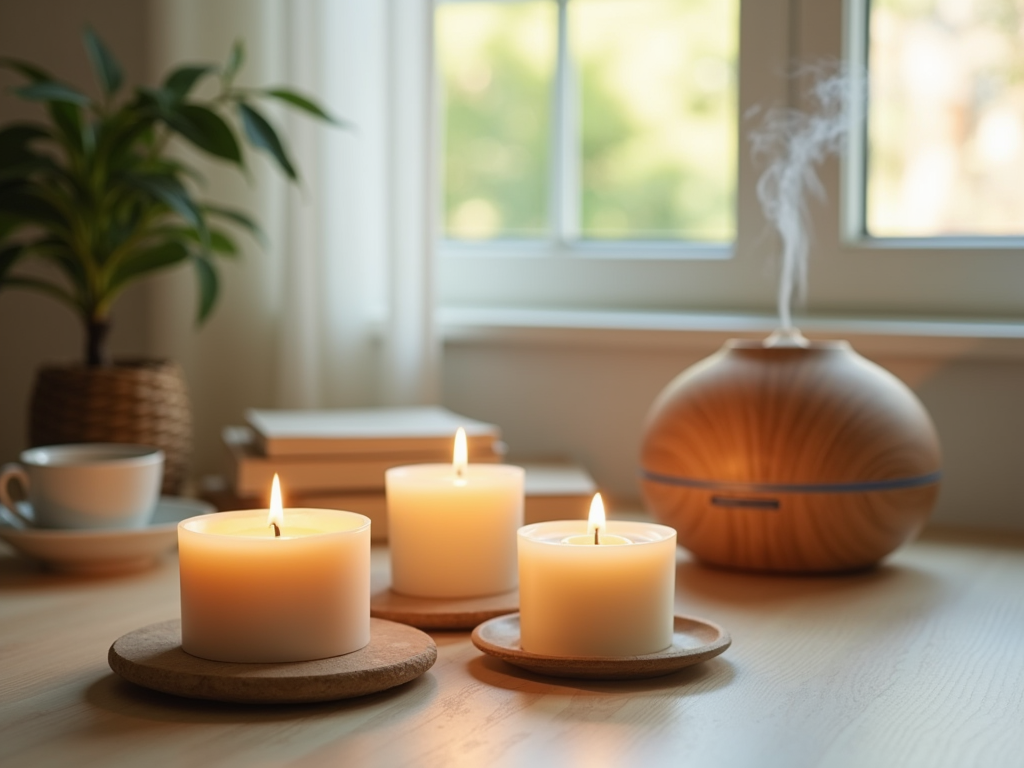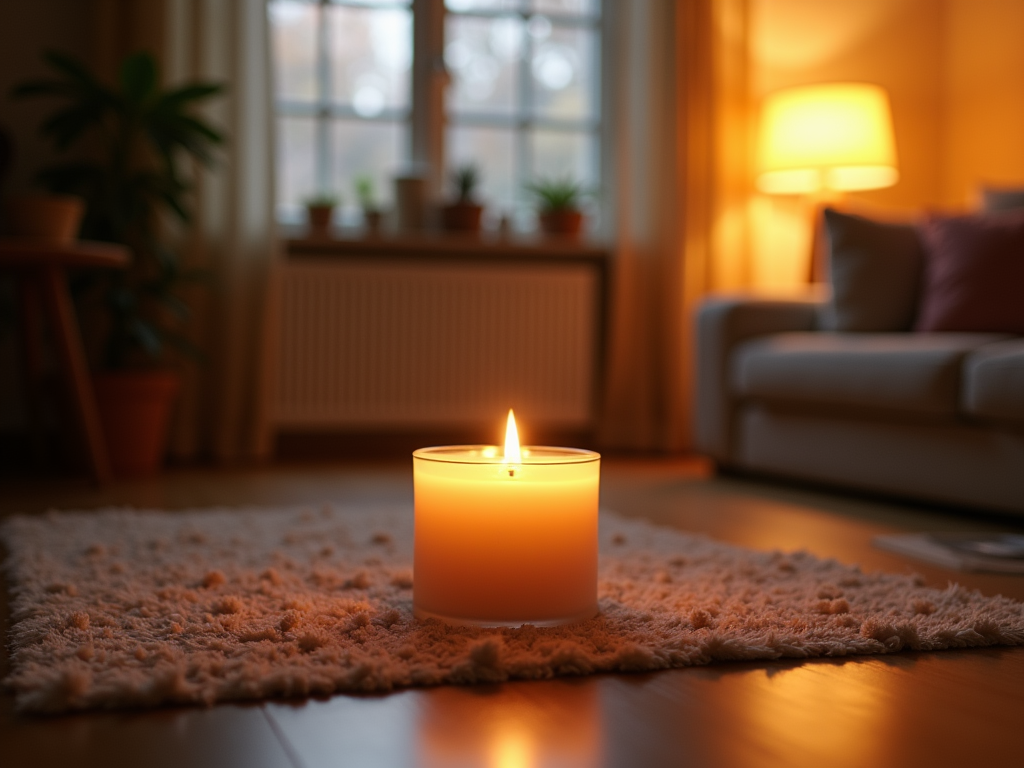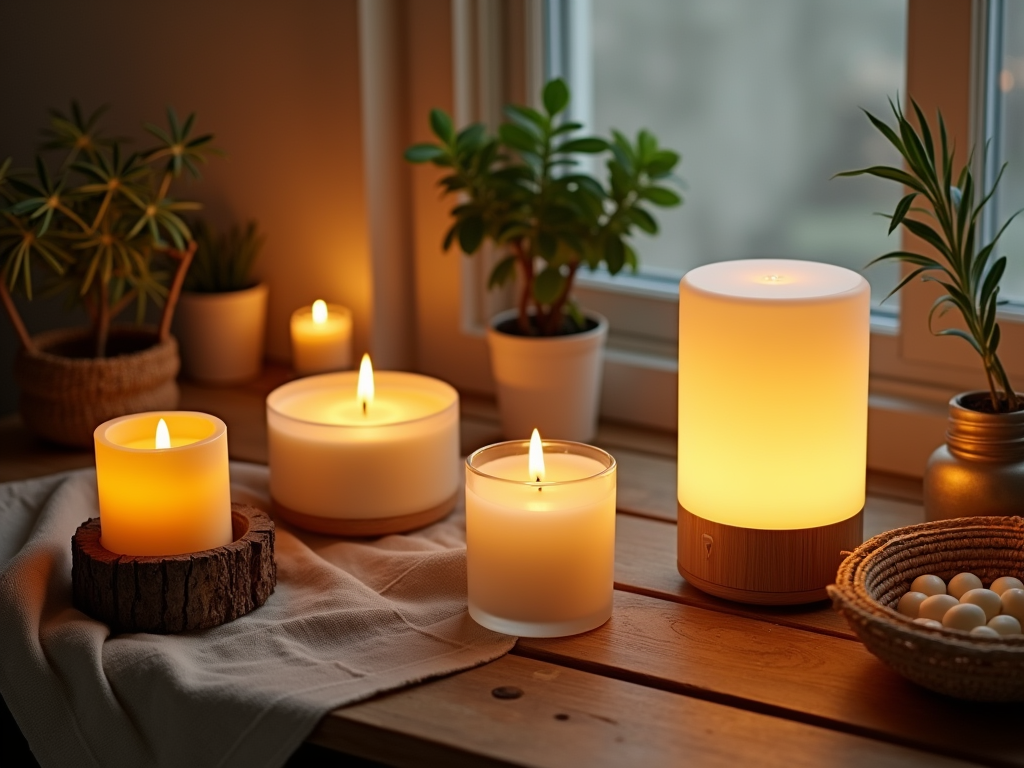
Candles can either enhance your space or impact your air quality, depending on the type you choose. Paraffin-based candles, made from petroleum byproducts, release pollutants like benzene and toluene when burned. These chemicals are linked to respiratory concerns and may degrade indoor air. On the other hand, natural wax options—like soy, beeswax, or coconut—are far cleaner. They produce less soot, burn longer, and are better suited for supporting both personal health and eco-conscious living.
Key Points to Consider:
- Paraffin Risks: While affordable and widely available, paraffin candles can introduce harmful substances into your home. Poor ventilation may worsen these effects.
- Natural Wax Benefits: Soy, beeswax, and coconut wax candles offer a safer alternative. Beyond reducing pollutants, beeswax candles even neutralize airborne particles, making them ideal for purifying your space.
- Fragrances and Dyes: Synthetics used in many candles can contain irritants like phthalates. If you’re sensitive to scents, look for products labeled “phthalate-free” or infused with pure essential oils.
- Candle Care Tips: Always trim the wick to about ¼ inch before lighting. This minimizes soot and maximizes efficiency. Burn candles in a well-ventilated area to allow any emissions to dissipate.
Alternative Options
For those looking to avoid combustion entirely, consider flameless options like LED candles. These provide a similar ambiance without air quality concerns. Essential oil diffusers are another great choice, offering customizable fragrance blends while skipping open flames altogether.
Investing in cleaner alternatives lets you enjoy the mood-setting glow without compromising your health.
How Your Candles Are Made Matters
The materials used in candles can influence both your health and the planet. Paraffin wax, a petroleum byproduct, is one of the most common candle ingredients. It can contain impurities that release potentially harmful chemicals when burned, such as benzene and toluene. These compounds have been associated with air pollution and may contribute to respiratory issues over time.
On the other hand, natural waxes like soy, beeswax, and coconut offer safer, more eco-friendly alternatives. Soy and other plant-based waxes are renewable, biodegradable, and produce less soot. Beeswax even has air-purifying properties due to its ability to emit negative ions as it burns. Coconut, palm, and rapeseed waxes also hold their ground as sustainable, clean-burning choices.
Choosing candles made from natural waxes not only benefits air quality but supports sustainable production, making them a better choice for you and the environment.
What Happens When You Burn a Candle?
Burning a candle triggers a combustion process. The heat melts the wax, turning it into vapor that combines with oxygen to sustain the flame. During this, candles release volatile organic compounds (VOCs), particulate matter (PM), and, in some cases, soot. Paraffin-based candles, derived from petroleum, are known to produce more soot and VOCs like toluene and benzene. These emissions can affect indoor air quality, especially in poorly ventilated spaces.
In contrast, soy or beeswax candles create fewer emissions and hardly any soot, making them cleaner-burning alternatives. For perspective:
- A paraffin candle can emit levels of fine PM comparable to frying food, though far less than cigarette smoke.
Ensuring good ventilation—like opening windows or using exhaust fans—helps dilute these pollutants, keeping your home’s air fresh and breathable.
Can Candle Emissions Affect Your Health?
Burning candles can release small amounts of particulate matter, VOCs (volatile organic compounds), and even soot into the air. For people with respiratory issues like asthma or allergies, these emissions might trigger irritation or exacerbations. Common symptoms include coughing, wheezing, or itchy eyes, especially in poorly ventilated spaces.
There’s limited research on long-term exposure, but some suggest a connection between chronic inhalation of indoor pollutants and conditions like lung cancer or cardiovascular problems. It’s worth noting that occasional use of candles is considered low-risk for most people.
For those prone to allergies or asthma, reducing indoor air pollution is key. Here are some steps you can take:
- Opt for natural, unscented candles made from soy or beeswax.
- Ensure your space is well-ventilated while burning candles.
- Avoid frequent use of candles with synthetic fragrances or paraffin, as these may emit higher levels of pollutants.
While there’s a growing call for deeper studies into how emissions impact health, moderation and mindful choices remain practical ways to enjoy candles safely.

What’s in Those Fragrances and Dyes?
Fragrances in candles can be a mixed bag when it comes to health. Many synthetic fragrances include phthalates, which are linked to hormone disruption. Phthalates like DEP (diethyl phthalate) and DBP (dibutyl phthalate) are common offenders. These chemicals aren’t just airborne while the candle burns—they can linger in your home’s air long after. For those sensitive to such compounds, they may trigger headaches, respiratory irritation, or even hormone-related health concerns.
Natural essential oils offer an alternative. They’re free from phthalates and have added benefits, like promoting relaxation or focus. However, it’s not all rosy—pure essential oils can be pricey, and their scent throw might not match the strength of synthetics. Some may also degrade under high heat, altering the fragrance or even reducing therapeutic effects.
Colors in candles often come from synthetic dyes. These can release harmful particles when burned. While using a brightly colored candle occasionally isn’t likely to harm you, heavy use in poorly ventilated spaces can pose risks. If you’re concerned, look for candles dyed with natural mineral pigments or vegetable-based colors. These are generally seen as safer alternatives, though they may lack the intense vibrancy of synthetic options.
A good rule of thumb is to:
- Check product labels.
- Seek candles labeled as phthalate-free or dye-free.
These steps can help you minimize exposure to harmful compounds while enjoying your favorite candles.
Simple Ways to Burn Candles Safely
Always trim your wicks to about ¼ inch before each use to reduce soot and ensure an even burn. Ventilate the room when burning candles to maintain good air circulation, especially with scented varieties. Avoid placing candles in drafts, as this not only wastes wax but can also create uneven burns or make the flame flicker dangerously.
Limit burn times to no more than 3-4 hours at a stretch to prevent overheating the container or risking cracks. Always keep candles on a heat-resistant surface and store them far from flammable materials. Crucially, you should never leave a candle burning unattended.
If you’re worried about toxins, choose options made from natural waxes like soy or beeswax and avoid synthetic fragrances or dyes. These choices create cleaner burns and minimize indoor air quality concerns. Practical choices make all the difference to keep things safe and enjoyable!

Alternatives for a Healthier Glow
Safer options can easily replace traditional paraffin candles. Beeswax candles are a fantastic choice. They’re natural, burn cleanly, and even emit negative ions that may help purify indoor air. Soy candles are another solid alternative. Made from renewable resources, they’re non-toxic and biodegradable, plus they burn longer than paraffin.
For a flame-free option, LED candles provide the same cozy ambiance without any soot or emissions. Modern designs even mimic the flicker of a real flame. Then there are essential oil diffusers, which fill your space with natural scents without combustion, promoting cleaner air and a healthier environment.
Brands like Bluecorn Beeswax and P.F. Candle Co. stand out for sustainable and non-toxic products. Look into eco-friendly LED candles by Luminara for low-maintenance mood lighting. These alternatives are as stylish as they are safe, offering peace of mind alongside a warm glow.

Sources:
European Respiratory Journal
Environmental Health Perspectives
EPA
American Lung Association
National Candle Association
